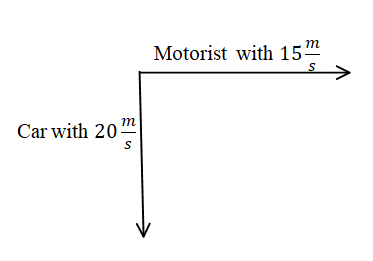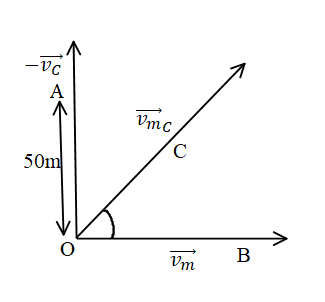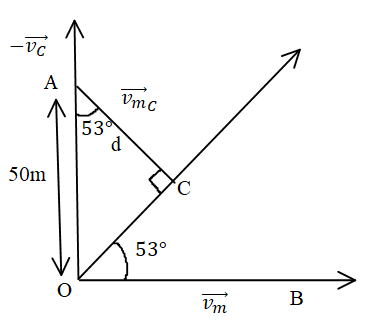Question
Question: A car moving towards the south with a speed of \(20\dfrac{m}{s}\). A motorcyclist is moving towards ...
A car moving towards the south with a speed of 20sm. A motorcyclist is moving towards the east with a speed of 15sm. At a certain instant (t=0) the motorcyclist is due south of the car and is at a distance of 50m from the car. The shortest distance between the motorcyclist and the car is and which they are nearest to each other after t=0.
A) 10m, 1⋅6s.
B) 20m, 1s.
C) 30m, 1⋅6s.
D) 40m, 1s.
Solution
The vector resultant can be used here to solve this problem. As the resultant can be moved from one place to another without changing its orientation. Also, the negative of the vector is the vector having the same magnitude and the direction is just opposite to the original vector.
Complete step by step answer:
As it is given that the car is moving south with a speed of 20sm and the motorcyclist is moving towards the east with a speed of 15sm.

Let us change the direction of the velocity vector of the car and then calculate the resultant of the velocities of the car and motorist.

As it is also given that the distance between the car and motorist initially was 50m.
Now the resultant of the velocity vector of car velocity and motorist velocity is given by,
⇒vmc=152+202
⇒vmc=625
⇒vmc=25sm
Now calculate the angle,
⇒tanθ=(vmvc)
⇒tanθ=(1520)
⇒θ=tan−1(1520)
⇒θ=tan−1(1⋅33)
⇒θ=53∘
The shortest distance will be perpendicular from the point A to the resultant of the velocity vector of car and motorist.

The shortest distance is d to the resultant of the velocity vector of car and motorist.
Here the shortest distance is given by,
In the above triangle formed.
⇒50cos53∘=d
⇒d=30m.
So the shortest distance is given by d=30m.
Now let us calculate the time taken by the motorist to reach point C is given by,
As OM=50sin53∘andvmc=25sm.
The time taken is given by time=speeddistance
So the time is given by,
⇒t=∣vmc∣OC
⇒t=2550sin53∘
⇒t=1.6s
∴ The shortest distance is given by d=30m and the time taken by the motorist is equal to t=1.6s. So the correct option for this problem is option (C).
Note:
The initial distance between the motorist and the car was 50m also when we change the direction of any vector completely opposite to its initial direction then a negative sign comes while representing the new vector.
